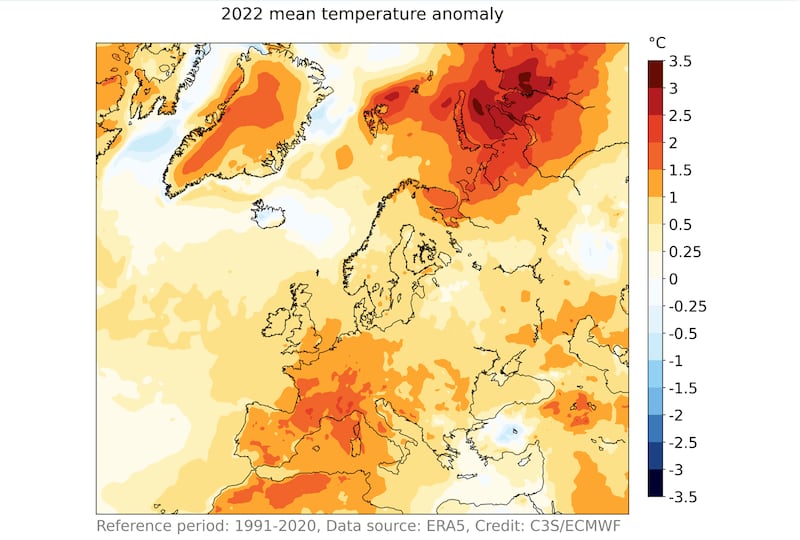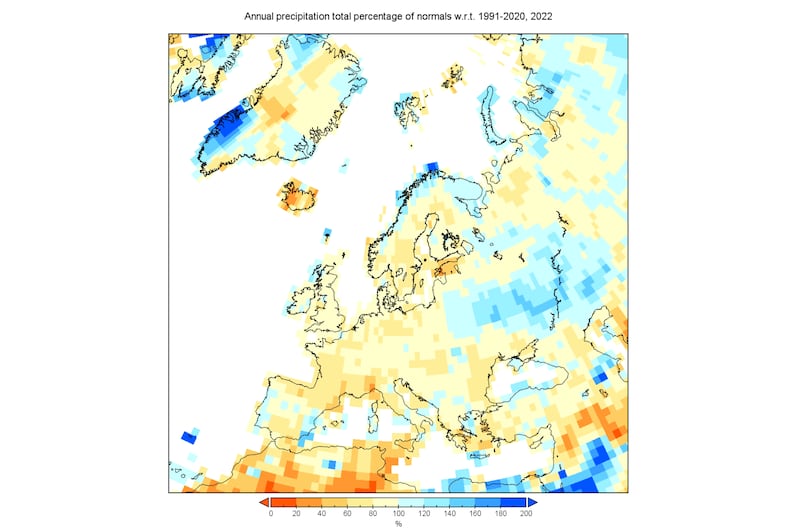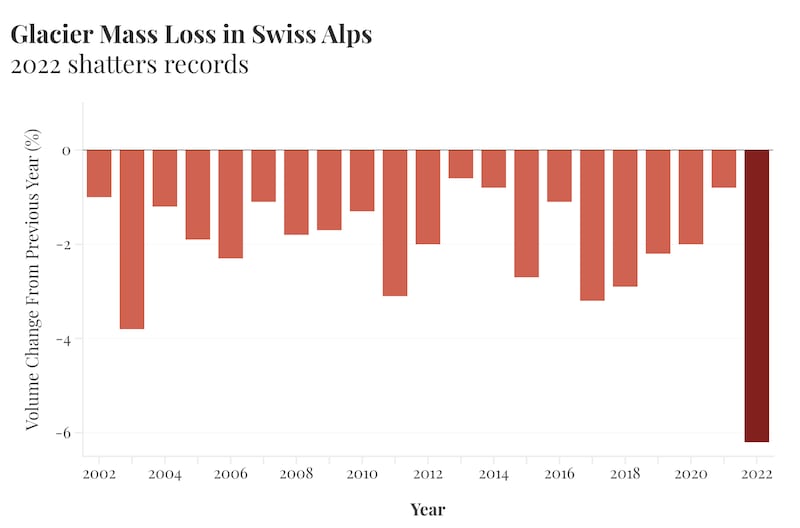There is a pattern of warming across the planet that is worrying climate scientists, and confirming Europe’s vulnerability because the Continent is experiencing temperature increases significantly higher than the global average.
The second annual report on the state of the climate in Europe – for the year 2022 – by the World Meteorological Organisation and the EU’s Copernicus Climate Change Service indicates the Continent continues to warm at twice the rate of the global average.
But the heating trend so far this year is bringing the broader global trend to a new level as temperatures have accelerated to record-setting levels this month over much of the planet; the latest ominous sign in the climate crisis ahead of a gathering El Niño that could potentially propel 2023 to become the hottest year recorded.
What’s more it could lead to “unprecedented heatwaves” and more extreme weather events, scientists have warned. One of the most severe marine heatwaves on Earth has developed off the coast of Ireland and the UK in recent weeks, with water temperatures as high as four to five degrees above normal.
READ MORE
[ Climate change is scarring Europe, and southern countries most of allOpens in new window ]
The National Oceanic and Atmospheric Administration (NOAA) Marine Heatwave Watch based in the US has categorised this event as a “category 4 (extreme)” marine heatwave. At a global level, no ocean basin is seeing such widespread and intense marine heatwaves as the North Atlantic.
Excess heat in the oceans, which cover 70 per cent of the globe’s surface, influences overall global temperatures, as well as warping fish populations, bleaching coral reefs and driving coastal sea level rises.
Early forecasts in January suggested El Niño would return later this year, exacerbating extreme weather around the globe and making it “very likely” the world will exceed 1.5 degrees of warming. The hottest year in recorded history, 2016, was driven by a major El Niño.

It is part of a natural oscillation driven by ocean temperatures and winds in the Pacific, which switches between El Niño; its cooler counterpart, La Niña; and neutral conditions. The last three years have seen an unusual run of consecutive La Niña events. But what has happened in recent weeks have been giving rise to great concern among climatologists.
“The oceans have been warming steadily but we are now seeing record temperatures which is certainly alarming given we are expecting El Niño to strengthen,” said Ellen Bartow-Gillies, a climate scientist at NOAA. “That will undoubtedly have an impact on the rest of the world.”
Preliminary global average temperatures taken so far in June are nearly one degree above levels previously recorded for the same month, going back to 1979. The month is not yet complete, however, and may not set a new June record.
There has been “remarkable global warmth” so far in June, according to Copernicus, the EU’s Earth observation arm. Separate to today’s Europe report, it confirmed the first few days of the month even breached a 1.5-degree increase compared with pre-industrial times. This is probably the first time this has happened since industrialisation, it added.

The long-term warming conditions caused by the burning of fossil fuels will probably receive a further pulse of heat via El Niño, a naturally recurring phenomenon where sections of the Pacific Ocean heat up, typically causing temperatures to spike across the world.
And there is sufficient evidence to indicate that human-induced carbon emissions are exacerbating these conditions – ie this is outside the realm of normal weather patterns. Marked reductions in emissions is the only way to avoid the worst effects from such overheating. – Additional reporting: Guardian
















